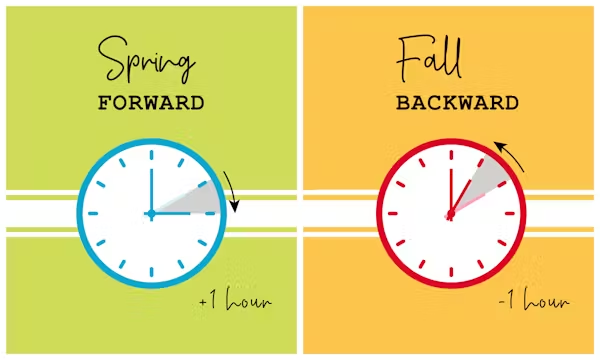Daylight Savings Time (DST) is a practice that has sparked both support and confusion across the globe. Each year, millions of people adjust their clocks forward or backward by an hour, but many are left wondering why we still use this system. In this article, we’ll explore what daylight savings time is, why it was introduced, how it impacts our lives today, and whether it’s still relevant in modern times.
What is Daylight Savings Time?
Daylight Savings Time, often abbreviated as DST, is the practice of moving clocks forward by one hour during the warmer months (spring and summer) to extend evening daylight. The idea is to take advantage of natural daylight in the evenings, which can save energy and make better use of the long summer days. Clocks are then turned back an hour in the fall, returning to standard time.
In essence, DST shifts an hour of daylight from the morning to the evening, meaning the sun sets later in the day. Most countries that observe daylight savings time make the switch twice a year: once in the spring (commonly referred to as “springing forward”) and once in the fall (known as “falling back”).

The History of Daylight Savings Time
The concept of daylight savings time dates back to the early 20th century. It was first widely adopted during World War I, when governments sought ways to conserve energy. By adjusting clocks, nations could reduce the need for artificial lighting in the evening, conserving fuel that was critical for the war effort.
Germany was the first country to implement DST in 1916, and other countries, including the United States and the United Kingdom, quickly followed. Although the practice was initially abandoned after the war, it was reintroduced during World War II for similar energy-saving purposes.
After the war, daylight savings time became a seasonal practice in many countries, though its implementation varies widely today. Some countries use DST regularly, while others have abandoned the practice entirely.
Why Do We Still Use Daylight Savings Time?
The main argument for daylight savings time is energy conservation. By shifting an hour of daylight to the evening, there’s less need for electricity to light homes, businesses, and streets. This was especially important during wartime and in the early 20th century when energy resources were scarce.
In modern times, the benefits of DST for energy conservation are more debated. Some studies show that it leads to modest energy savings, while others suggest that the impact is minimal, especially with the advent of modern lighting and heating systems. Nevertheless, many countries continue to observe daylight savings time, with proponents arguing that it provides more daylight for outdoor activities and promotes a better quality of life during the summer months.
How Daylight Savings Time Affects You
While daylight savings time may seem like a minor adjustment, it can have notable effects on our daily lives and well-being. Here are some of the key ways DST can impact you:
- Sleep Disruption: When the clocks change, especially in the spring, it can disrupt your sleep schedule. Losing an hour of sleep can lead to fatigue, decreased productivity, and even mood changes for a few days after the switch.
- Health Impacts: Research has shown that the transition into daylight savings time can affect your health. The loss of sleep in the spring has been linked to a slight increase in heart attacks and traffic accidents in the days following the change. Additionally, some people experience longer-term sleep issues due to the adjustment in their circadian rhythms.
- Work and Productivity: For many, daylight savings time provides more daylight after work or school, allowing for more outdoor activities or errands in the evening. However, the initial disruption in sleep can temporarily reduce productivity at work or in school.
- Economic and Social Benefits: The extra hour of daylight in the evening encourages more outdoor activities and can boost certain industries, such as retail and tourism. Extended daylight hours may lead to more shopping, dining out, and recreational activities, which can positively impact local economies.
Is Daylight Savings Time Still Relevant?
In recent years, there has been growing debate over whether daylight savings time is still necessary. Critics argue that the energy savings are minimal and that the disruption to people’s lives, health, and schedules outweighs the benefits. In fact, some countries have opted out of daylight savings time altogether, while others have pushed for the system to be abolished.
In the United States, several states have proposed legislation to eliminate DST or make it permanent year-round, meaning clocks would no longer change twice a year. The European Union is also considering ending the practice, allowing each country to choose whether to observe daylight savings time or stay on standard time year-round.
Conclusion
Daylight savings time has a long history rooted in energy conservation, but its relevance in the modern world is increasingly being questioned. While it provides extended daylight in the evenings and can boost economic activity during the summer, the impact on sleep, health, and productivity has led many to reconsider its usefulness. As more countries debate the future of daylight savings time, it remains to be seen whether this seasonal tradition will continue or fade into history.



